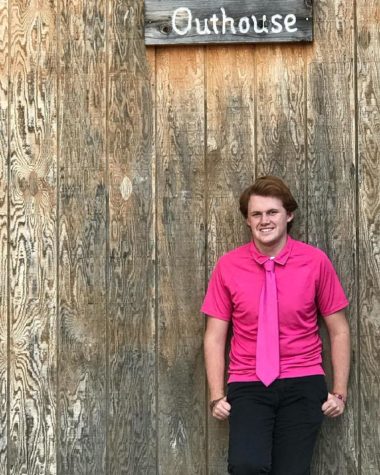Suicide: the plague claiming lives in Wyoming
Three sisters, (left to right) Lisa O’Dell, Angela Brennan, and Kerry Dunlavy, walk to represent their team, 4Jutst 19, at the Out of the Darkness Walk on Sep. 7, 2013.
In 2012, Wyoming ranked No. 1 in suicide rates in the United States. Currently, 2013 has yielded these same alarming, high rates of suicide. In 2010, there were 19.7 suicides per 100,000 people. “Report on Suicide in Wyoming” states that, “[Suicide] is the second leading cause of death for Wyoming youth, who have a suicide rate twice the national average.” Wyoming, however, is beginning to put forward more effort to prevent suicide and save the lives of those suffering.
On Sep. 7, 2013, Cody, Wyo. hosted a walk for suicide prevention and awareness. The walk, called Out of the Darkness, gathered teams of walkers and single walkers to gather donations for the American Foundation for Suicide Prevention (AFSP). Over 200 walkers raised $8,636 for AFSP, though donations will be accepted through the beginning of the new year.
The top fundraising team, 4Jutst19, included a total of 18 walkers, all from the Sheridan, Wyoming area– myself included. 4Jutst19 raised $3,909: over ⅓ of the entire funds raised. The team’s captain, Lisa O’Dell, raised $2,099 herself. O’Dell, having had her life touched by suicide, is extremely involved in the walk, and participated in Sheridan’s own hosting of the event on Sep. 8, 2012.
O’Dell lost her son to suicide on Oct. 17, 2011. Since, she has participated in two AFSP walks and raised thousands of dollars for suicide prevention.
Understanding those at risk for suicide is one of the most important steps to preventing the devastating loss. According to the AFSP, the most overt and alarming sign that a person may be at risk is a mental disorder, such as depression, Bipolar disorder, substance abuse or dependence, anxiety disorders, and many more. It is important to remember that these disorders are exactly that: disorders. When treated like a phase or cry for help, progress is halted, if not completely taken away. Those suffering feel as though their pain is no longer authentic when it is dismissed by those around them, and thus, the victims are left to suffer in silence: a quick route to suicide.
“Depression is far more widespread than we have ever been led to believe,” said O’Dell, “and because it is lumped in under ‘mental illness,’ people don’t feel like they can comfortably ask for help, because they feel like they might be labeled ‘crazy.’” These disorders, including depression and anxiety disorders, are caused by chemical imbalances in the brain– a physical issue inside of the body, just like any other disorder. According to O’Dell, suicide should be treated as seriously as any other medical disorder. They can’t be helped any more than someone could simply help having cancer; the cause of the issue is in their body composition, and must be treated like any other medical problem.
Reaching out to those suffering from these disorders can be the first step to preventing suicide, says the AFSP. It’s essential to show understanding and consideration for those suffering, as well as know how to recognize the warning signs. When someone begins to openly speak about suicide or wanting to die, look for a way to hurt or kill him or herself, talk about a specific plan, etc., these are the biggest indicators that suicide has become a serious threat to this person. According to AFSP, “50% to 75% of all people who attempt suicide tell someone about their intention.” These signs must be taken seriously, no matter what the circumstance; taking the right steps toward helping someone who is suffering could save his or her life.
Suicide is not a joke. It’s not something to take lightly. However, many people, particularly teenagers, seem to adopt a careless mentality toward suicide. When approached with a suicidal peer, never hesitate to encourage him or her to seek help. If someone you know is considering suicide, never be afraid to ask them about it; this is one of the only ways to be absolutely sure, so you can relay the message to someone who is better equipped to really help him or her. “Asking is probably 90% of the battle,” said O’Dell, “no one wants to hear that coming back to them, but you could save someone’s life.” Express concern to the individual, and be sure to explain exactly what behavior has led to the belief that he or she is contemplating suicide. If possible, try to remove any life-threatening items from him or her, including firearms, medication, knives, etc., and take him or her to a hospital or walk-in clinic. By no means, under any circumstances, leave the suffering individual alone.
Raising awareness is more essential than ever. Our responsibility to those suffering is to give our utmost compassion and understanding, and share this compassion and understanding with those who are lacking. “At the time when [my son] died, I had no idea there was an AFSP organization here… I think that’s sad. I think everyone should know that,” said O’Dell.
The American Foundation for Suicide Prevention website (afsp.org) offers extensive help and advice to those who may be suffering, or those who may know someone that is suffering. The website also offers contact information to assist readers in finding appropriate help, as well as information regarding the suicide awareness walks and other AFSP functions.











